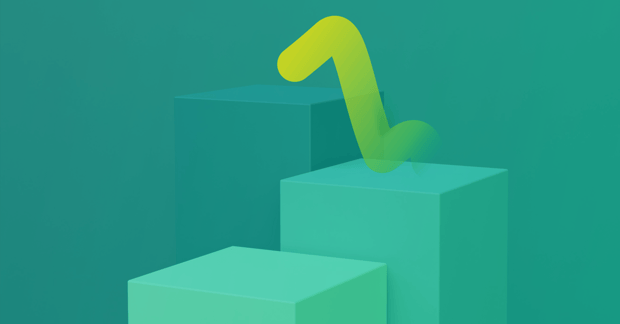
ERP transformation requires extensive planning, but eventually, you need to actually begin the transition. Let's explore how you can traverse the pitfalls of an upgrade to SAP S/4HANA or a similar tool.
Enterprise resource planning (ERP) transformation process mining can sometimes feel like it takes forever. It's easy to forget that you eventually need to actually carry out the work.
The start of your ERP transformation is a milestone to celebrate, but it also means your efforts have just begun. The actual migration to SAP S/4HANA, or whichever new ERP tool you're moving to, can be just as challenging as getting the planning right.
In the previous two parts of this series, we looked at preparing and roadmapping your transformation, respectively. In this article, however, we'll consider how you can use the LeanIX enterprise architecture management (EAM) platform to navigate through the actual ERP transformation itself.
Enable Alignment And Collaboration With Stakeholders
In the previous two parts of this series, we explained how any enterprise resource planning (ERP) transformation must be a collaboration across your entire business. This is for two reasons:
- You need the support of the rest of your organization to understand the current and desired state of your ERP platform
- You will need the support and approval of your stakeholders in any change management initiative
Thankfully, the LeanIX enterprise architecture management (EAM) platform enables you to democratize the process. Rather than an 'us and them' atmosphere where your enterprise architecture team are pushing forward an ERP transformation, you will now both be working in a collaborative environment.
The LeanIX EAM acts as a single source of truth for both your ERP transformation team and your stakeholders. The evidence of the need for the transformation steps exists within the platform and can be viewed by anyone.
Your enterprise architecture team is then seen to be providing a service to cater to a visible need within your organization, rather than causing disruption for unspecified reasons. Get your stakeholders involved in the transformation by encouraging them to feed back and contribute to the transformation process in the LeanIX EAM.
Given that our pricing structure revolves around the number of applications you input, rather than the number of users, anyone in your business can be granted access to collaborate within the LeanIX EAM. This means your roadmap can be visible to all your stakeholders throughout your ERP transformation.
Track And Report On ERP Transformation Progress In Real Time
Staying agile is essential for any enterprise resource planning (ERP) transformation. If things don't go as planned, you need to be ready to change course or remediate any incurred risks.
Within the LeanIX enterprise architecture management (EAM) platform, you can track the progress of your ERP transformation in real time. This enables you to identify setbacks, delays, and failures, as well as reporting on success.
This serves to guide your ERP transformation as it happens, but also to keep stakeholders informed automatically. Reasons for changes of plans and loss of service are clearly visible, but also the real-time benefits of your efforts can be witnessed and celebrated.
LeanIX EAM isn't a project planning tool, however. Rather than be locked into the project plan, the platform is built on your real-time data, so it can provide a roadmap based on fact, rather than projections.
This means that, as your plan changes and you adapt to the results of your progress, your roadmap can change with you. This will also show you the change to the target state of your ERP platform as your strategy alters.
Best of all, the tools within the LeanIX EAM will allow you to visualize all of this information to provide instant clarity to your stakeholders. Whether you need a high-level overview at a glance, or immense amounts of granular detail, our EAM can scale to you requirements.
Stay On Budget And Schedule
Key to your reporting on your enterprise resource planning (ERP) transformation will be your resource and timeline constraints. This is another benefit of the LeanIX enterprise architecture management (EAM) platform.
Using data sourced from the LeanIX EAM, you can track your investment in your ERP transformation and compare it to your remaining budget and person-power. You can also visualize your schedule for implementation and instantly see where you need to catch up and when your timescale needs to extend.
Dependencies will also be clearly visible in your roadmap within the LeanIX EAM. This means you can fully predict where a delay in one area is going to hold you back somewhere else.
This makes the LeanIX EAM an essential tool for:
- mapping your current ERP state
- planning for your ERP transformation
- monitoring and navigating your ERP transformation in real time
Still, the need for LeanIX EAM doesn't stop there.
Enable Ongoing Enterprise Architecture Management
Even after your enterprise resource planning (ERP) transformation has been completed, you will still need to track its impact on your enterprise architecture and identify ongoing optimization opportunities. ERP transformation isn't just about a one-off change in software, but transitioning to a culture of continuous transformation in order to cope with the increasing pace of change.
The LeanIX enterprise architecture management (EAM) platform will continue to monitor and provide clarity and insight into your application portfolio throughout your ERP transformation and beyond. This is why it's an essential tool for supporting continuous transformation.
To find out more about how LeanIX can support your ERP transformation and much more, see our use case:
.png?width=140&height=107&name=BTMPlaybook-FI%20(1).png)

